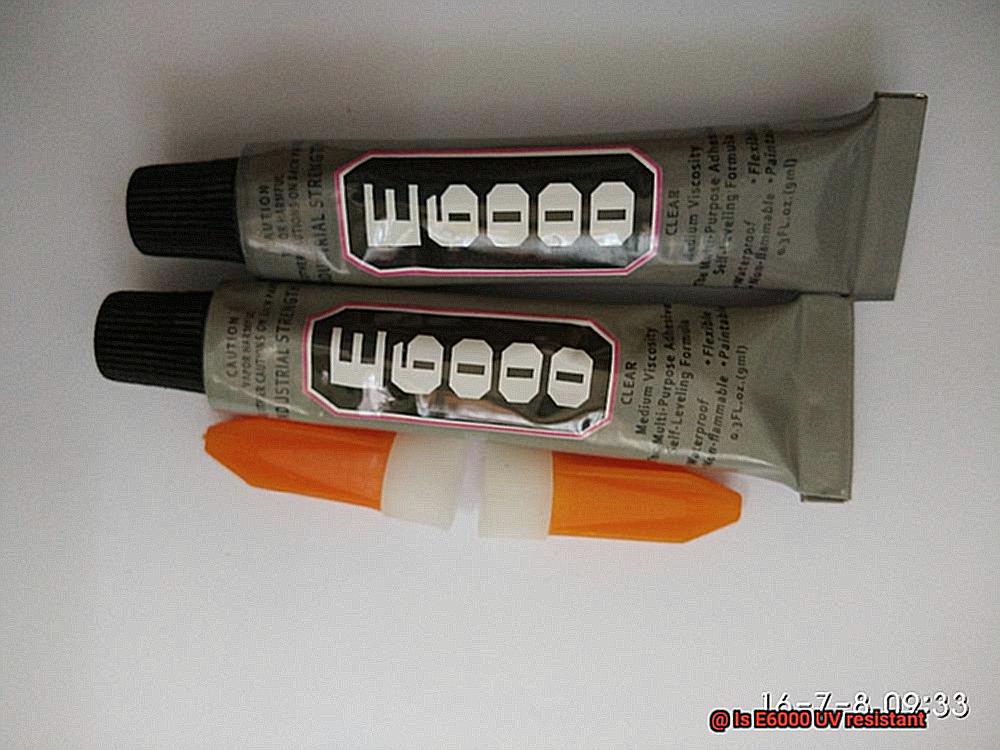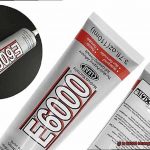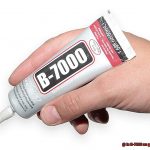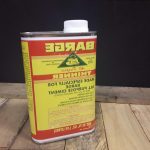Picture this: you’re knee-deep in a DIY project, sweat dripping down your brow as you meticulously glue pieces together. In your hand, the trusty tube of E6000 adhesive, renowned for its unmatched strength and reliability.
But here’s the million-dollar question that keeps popping up – is E6000 UV resistant? Can it handle the scorching sun without breaking a sweat? Well, my friend, today we embark on a quest to unravel the mysteries of E6000’s UV resistance.
So whether you’re a seasoned crafter or just curious about this sticky stuff, get ready to uncover the truth about how E6000 fares under the blazing gaze of ultraviolet light.
What is E6000 Adhesive?
Contents
- 1 What is E6000 Adhesive?
- 2 What is UV Resistance?
- 3 Does E6000 Claim to be UV Resistant?
- 4 Experiences and Projects with E6000 and UV Resistance
- 5 Factors That Affect the Effectiveness of E6000 in Resisting UV Radiation
- 6 Should You Use an Adhesive Specifically Labeled as UV Resistant?
- 7 Additional Protection Against UV Radiation for E6000 Adhesive
- 8 Conclusion
When it comes to crafting and DIY projects, having a reliable adhesive is essential. That’s where E6000 Adhesive comes in. This solvent-based adhesive has gained a reputation for its exceptional bonding capabilities and versatility, making it a staple in the crafting community.
One of the standout features of E6000 Adhesive is its ability to bond to a wide variety of materials. Whether you’re working with wood, metal, glass, ceramics, fabric, or leather, this adhesive has got you covered. Its unmatched bonding power ensures that your projects will stay intact for years to come.
Flexibility is another key advantage of E6000 Adhesive. Unlike some other adhesives that can become brittle or crack over time, E6000 remains flexible even after curing. This means that it can withstand movement and vibrations without compromising the bond. It’s perfect for jewelry making or attaching embellishments to fabrics, where flexibility is crucial.
Waterproofing is another area where E6000 shines. Once cured, it forms a strong and waterproof bond that can withstand exposure to water. This makes it ideal for both indoor and outdoor projects. Repairing outdoor furniture or sealing gaps in bathroom fixtures becomes a breeze with E6000 Adhesive.
Temperature resistance is yet another impressive quality of this adhesive. It can withstand temperatures ranging from -40°F to 180°F (-40°C to 82°C), making it suitable for projects that may be exposed to extreme temperature conditions. Whether you’re creating something for hot summers or freezing winters, E6000 has you covered.
However, it’s important to note that E6000 Adhesive does have a strong odor due to its solvent-based formula. To ensure safety, it’s recommended to use this adhesive in a well-ventilated area or wear a mask when working with it.
What is UV Resistance?
Imagine pouring your heart and soul into creating a stunning art project or crafting a beautiful piece of jewelry, only to see it fade, crack, or fall apart after exposure to sunlight. This is where UV resistance comes to the rescue. UV resistance refers to a material’s ability to withstand the destructive effects of ultraviolet (UV) radiation from the sun. Let’s explore the importance of UV resistance in the context of glue and adhesive products like E6000.
When materials are bombarded with UV radiation, they undergo a relentless assault called photodegradation. This assault breaks down chemical bonds within the material, leading to a plethora of negative consequences like discoloration, fading, cracking, peeling, and even degradation of physical properties. These issues are particularly worrisome for materials used outside or in areas with prolonged exposure to sunlight.
In the realm of adhesive products like E6000, UV resistance takes center stage when it comes to maintaining bond strength and integrity over time. Without proper UV resistance, an adhesive can become feeble and disintegrate when faced with UV radiation. This spells disaster for the longevity and performance of the bond, especially in applications that demand durability and weather resistance.
To bolster UV resistance, manufacturers ingeniously incorporate various additives or ingredients into adhesive formulations. These additives act as stalwart soldiers, absorbing or stabilizing UV radiation and shielding the adhesive from its harmful effects. By integrating these mighty additives, adhesives like E6000 can endure prolonged exposure to sunlight without compromising their remarkable performance.
It’s crucial to note that not all materials or products possess equal resistance to UV radiation. Different materials boast different levels of inherent UV resistance. Therefore, when selecting glue or adhesive products with UV resistance in mind, one must consider the intended use and environmental conditions. A product that thrives indoors may crumble under the sun’s relentless gaze in outdoor projects.
Does E6000 Claim to be UV Resistant?
When it comes to finding an adhesive that can withstand the test of time and the elements, many turn to the reliable E6000 glue. But does this popular adhesive claim to be UV resistant? Join us as we dive into the world of E6000 glue to uncover its UV resistance capabilities.
The Quest for UV Resistance:
Our search begins with a look at the product packaging. Although we didn’t find any explicit mention of UV resistance, don’t despair just yet. E6000 glue is renowned for its exceptional strength and durability, making it a trusted choice for both indoor and outdoor applications.
Real-World Experiences:
To find out more, we turned to the experiences of E6000 users. Many crafters and DIY enthusiasts have reported successful use of this adhesive in outdoor projects exposed to sunlight. This suggests that E6000 may indeed offer some level of UV resistance, even if it is not explicitly stated by the manufacturer.
Precautions and Tests:
It’s important to note that prolonged exposure to UV rays can degrade most adhesives over time. To ensure optimal results, it is recommended to apply a protective coating or take additional measures to minimize direct sunlight exposure when using E6000 in outdoor applications. Conducting a small test on a sample piece before applying the adhesive to your final project is also a wise move, ensuring that it meets your specific requirements.
Conclusion:
While E6000 may not explicitly claim to be UV resistant, its durability and successful use in outdoor settings speak volumes about its capabilities. Remember to take necessary precautions and conduct tests when using any adhesive in applications exposed to UV light. So go ahead and confidently use E6000 glue in your projects, knowing that it offers impressive strength and potentially some level of UV resistance.
Experiences and Projects with E6000 and UV Resistance
Get ready to embark on an exciting journey into the world of E6000 glue and its UV resistance capabilities. Whether you’re adding a touch of sparkle to your jewelry, fixing up your car, or sprucing up your outdoor space, we’ve got the inside scoop. Join us as we unveil the importance of choosing the right version of E6000 glue for projects exposed to UV rays, explore the advantages and disadvantages of each type, and provide examples of how they can be used in various applications.
The Importance of Choosing the Right Version:
Not all E6000 glue formulas are created equal in the face of UV rays. The original formula lacks UV resistance properties, making it less suitable for outdoor use or applications basking in direct sunlight. But fret not, fellow crafters. There are variations of E6000 specifically formulated to provide UV resistance and maintain their bond strength over time.
Advantages and Disadvantages:

Original Formula:
- Advantage: Boasts an exceptionally strong bond, perfect for versatile craft and DIY projects.
- Disadvantage: Not ideal for outdoor use or exposure to prolonged sunlight.
UV-Resistant/Outdoor Formulas:
- Advantage: Engineered to withstand the damaging effects of sunlight, ensuring long-lasting bond strength.
- Disadvantage: Though resilient, long-term exposure to sunlight may cause some degree of degradation over time.
Examples of Applications:
Outdoor Garden Decorations:
- Use UV-resistant E6000 to effortlessly bond glass tiles onto garden decorations.
- Secure stones on outdoor sculptures for an extra touch of durability.
Patio Furniture Embellishments:
- Elevate your patio furniture game by attaching embellishments using UV-resistant E6000.
Automotive Repairs:
- Trust in the power of E6000 to repair exterior parts that will be exposed to sunlight, keeping your vehicle looking sharp.
Factors That Affect the Effectiveness of E6000 in Resisting UV Radiation
E6000 is renowned for its strength and durability as an adhesive, but when it comes to UV resistance, several key factors come into play. Join us as we delve deeper into each factor, unraveling the secrets behind E6000’s performance under the relentless assault of UV rays.
Composition of E6000:
The composition of E6000 sets the stage for its UV resistance. This powerful adhesive consists of a base polymer, solvents, and additives. The choice of polymers and additives in the formulation can make all the difference. Epoxy or polyurethane-based E6000 formulations tend to exhibit superior UV resistance, while PVC or acrylic-based ones may falter in the face of sunlight.
Polymer Type:
The type of polymer used in E6000 plays a pivotal role in its ability to withstand UV radiation. Certain polymers, like epoxy or polyurethane, possess an innate resistance to UV rays. If your project requires prolonged exposure to sunlight, opting for these formulations will ensure optimal UV resistance.
Additives and Stabilizers:
To elevate performance and bolster UV resistance, manufacturers incorporate specific additives and stabilizers into E6000’s formulation. Among these are UV stabilizers, which shield the adhesive from degradation caused by sunlight exposure. These clever additives either absorb or reflect UV rays, safeguarding the integrity of the adhesive.
Thickness of Application:
The thickness at which E6000 is applied influences its capacity to resist UV radiation. Picture a physical barrier shielding against the relentless onslaught of sunlight. Thicker layers serve as this protective shield, minimizing direct exposure to harmful UV rays. For projects demanding high levels of UV resistance, consider multiple thin layers or seek out adhesives designed explicitly for such purposes.
Surface Preparation:

Proper surface preparation is key to unlocking the full potential of E6000’s UV resistance. A clean, dry, and smooth surface ensures optimal adhesion and a robust bond between the adhesive and substrate. Any contaminants or roughness on the surface can compromise the adhesive’s durability and its ability to withstand UV rays.
Environmental Conditions:
The environmental conditions in which E6000 operates can profoundly impact its UV resistance. Extreme temperatures, elevated humidity levels, and prolonged exposure to sunlight can accelerate the breakdown of certain polymers and additives, ultimately diminishing UV resistance. When selecting E6000 for outdoor applications, consider these factors to ensure long-lasting performance.
Should You Use an Adhesive Specifically Labeled as UV Resistant?
When working on a project that will be exposed to sunlight or other sources of ultraviolet (UV) light, it is crucial to use an adhesive specifically labeled as UV resistant. Here’s why:
- Protection against UV radiation: UV rays can cause regular adhesives to deteriorate over time, leading to a loss of bonding strength. This can result in the failure of the materials being bonded together, posing potential damage or safety hazards.
- Formulated for UV resistance: Adhesives labeled as UV resistant have been specially formulated to withstand the damaging effects of UV radiation. They contain additives or unique chemical formulations that act as a shield against UV rays. This protection prevents degradation and helps maintain the adhesive’s bonding strength, even with prolonged UV exposure.
- Optimal performance under UV exposure: While some regular adhesives may offer limited UV resistance, it is generally recommended to use an adhesive specifically labeled as UV resistant for applications where exposure to UV rays is expected. These adhesives provide added assurance that the bond will remain strong and durable over time, even in outdoor conditions or intense sunlight.
- Varying levels of resistance: It’s important to note that not all adhesives labeled as “UV resistant” are equal. Different adhesives have varying levels of resistance, so it’s essential to check the specific product’s specifications and capabilities. Following the manufacturer’s instructions regarding application and limitations will ensure optimal performance under UV exposure.
- Specialized formulations for extreme conditions: In situations where bonded materials will be exposed to extreme UV conditions, such as marine or outdoor applications, using an adhesive specifically formulated for those environments may be necessary for long-lasting results.
Additional Protection Against UV Radiation for E6000 Adhesive
E6000 adhesive is a popular choice for its exceptional strength and versatility in bonding materials. However, extended exposure to UV radiation can gradually deteriorate the adhesive, compromising the integrity of your bonds. This article delves into additional measures that can be taken to bolster the UV resistance of E6000 adhesive, fortifying your projects against the test of time.
Clear UV-Resistant Coatings:
To provide an extra shield against harmful rays, consider applying a transparent UV-resistant coating or sealant over the bonded area. These coatings act as barriers, effectively safeguarding the adhesive from direct UV radiation. Seek out coatings specifically designed for UV resistance to preserve the aesthetic appeal of your projects.
UV-Resistant Variants:
Certain manufacturers offer specialized versions of E6000 adhesive formulated for outdoor use. These variants contain additives or ingredients that significantly enhance UV resistance, enabling them to endure prolonged exposure to sunlight without degradation. Opt for these UV-resistant formulas when working on outdoor applications where UV exposure is a concern.
Proper Application Techniques:
Applying E6000 adhesive evenly and in sufficient quantity is crucial for enhancing its UV resistance. Uneven or inadequate application may lead to areas with thinner adhesive layers, making them more susceptible to UV damage. Adhere to the manufacturer’s instructions regarding application temperature, curing time, and storage conditions to ensure optimal performance under UV exposure.
Regular Inspection and Maintenance:
Despite employing additional protection measures, it remains essential to periodically inspect bonded surfaces for any signs of deterioration or weakening. Continuous exposure to sunlight can still cause some degree of degradation over time. By diligently monitoring your bonds and promptly addressing any concerns, you can ensure their longevity and reliability.
b2Dd2_BjEWY” >
Conclusion
To wrap things up, E6000 adhesive may not explicitly tout its UV resistance, but don’t let that deter you. With its unmatched strength and durability, this adhesive has earned the trust of countless crafters and DIY enthusiasts for both indoor and outdoor projects. In fact, many users have successfully employed E6000 in sun-soaked outdoor endeavors, hinting at its ability to withstand UV exposure.
However, caution is still key when using any adhesive in UV-exposed applications. Over time, prolonged exposure to those pesky UV rays can break down most adhesives. To ensure your project’s longevity, it’s wise to coat it with a protective shield or limit direct sunlight exposure when employing E6000 outdoors. And before diving into your final masterpiece, why not conduct a small test on a sample piece? It’s just another smart move to guarantee optimal results.
But let’s face it – if your project will bask in sunlight or face other sources of UV light regularly, opting for an adhesive specifically labeled as UV resistant is non-negotiable. These specialized adhesives boast unique chemical compositions or added ingredients that fend off the detrimental effects of UV radiation.
And guess what? You can even take additional steps to bolster E6000’s UV resistance. Applying clear coatings designed to combat harmful rays over the bonded area is one way to go. Alternatively, you can opt for outdoor-specific variants of E6000 that come fortified with extra protection against those relentless rays. Remember: proper application techniques and regular inspection and maintenance are vital for ensuring your bonds stand strong against the test of time.
So go ahead – embrace the power of E6000 glue in your projects. Its impressive strength and potential UV resistance make it a top-notch choice. Just remember to follow the manufacturer’s instructions diligently, take necessary precautions along the way, and consider additional protection measures when warranted.






